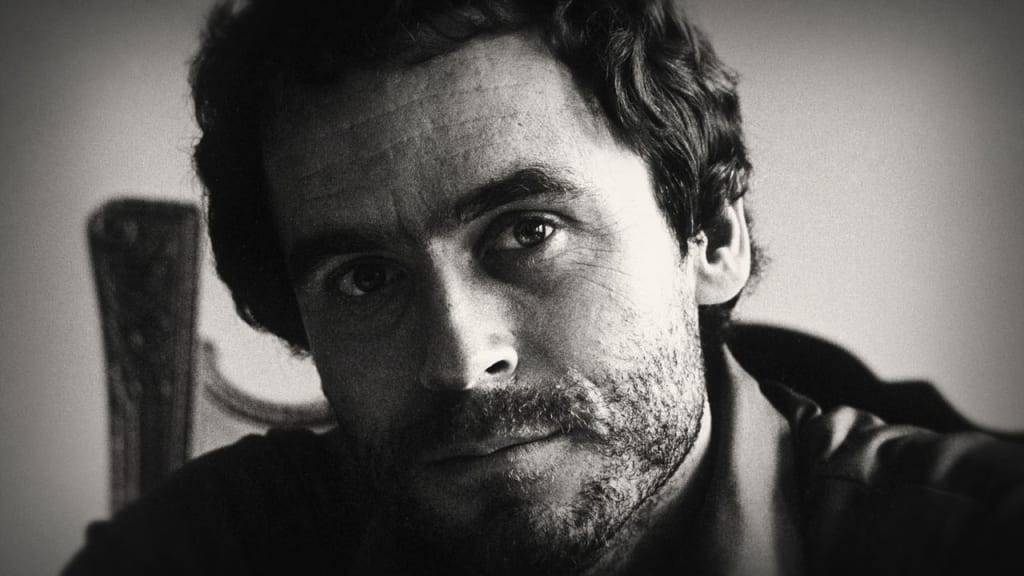Ted Bundy, one of the most notorious serial killers in American history, terrorized the Pacific Northwest and beyond in the 1970s. His gruesome crimes were marked by deception, brutality, and unspeakable depravity.
Bundy was born Theodore Robert Cowell in 1946 in Vermont to an unwed mother. He grew up believing his grandparents were his parents and that his mother was his older sister. Bundy had a troubled childhood, but was regarded as smart and charismatic. He studied psychology at the University of Washington and worked for a suicide prevention hotline, showing no outward signs of his inner demons.
Bundy's murders began in 1974 in Seattle, where he used his charm and good looks to lure young women into vulnerable positions by pretending to need help, often using a fake arm cast or crutches. He would then bludgeon or strangle them, fulfilling his twisted desires with their lifeless bodies before disposing of them. Many of his early victims were college students, including Georgann Hawkins and Susan Rancourt.
Despite witnesses describing a man named Ted driving a bronze Volkswagen Beetle, police failed to connect the dots back to Bundy. He continued killing in Utah and Colorado, with at least 20 confirmed murders from 1974-1975. Bundy's girlfriend Elizabeth Kloepfer recognized similarities between Bundy and the wanted killer, tipping off King County police in 1974. But with no hard evidence, he remained free.
In August 1975, Bundy was arrested for kidnapping in Utah after police found incriminating items in his car. Though no murder charges stuck, the noose was tightening. Investigators from three states compared notes and agreed Bundy was their prime suspect. He was convicted of kidnapping in 1976 and jailed in Utah. In 1977 Bundy made two dramatic escapes, heading to Florida after his second successful jailbreak.
The violence escalated in Florida as Bundy assaulted four women at Florida State University in January 1978, killing two. A month later he abducted and murdered 12-year-old Kimberly Leach. Within days, Bundy was arrested for driving a stolen vehicle by a Pensacola officer who had no idea he had America's most wanted man in custody.
Finally unmasked, Bundy confessed to 30 murders but experts believe the true number is much higher. He was executed in Florida's electric chair in 1989 at age 42. As the clock wound down, Bundy uttered his last words: "I'd like you to give my love to my family and friends."
Ted Bundy's legacy is one of horror. His intelligence and surface-level charms allowed him to hide in plain sight and manipulate perceptions. In reality, Bundy took pleasure in brutally beating, raping, and mutilating young women and girls. Even after his death, darkness clings to Bundy's name.
But his notoriety may have brought some good. Bundy's spree of savage murders shone a spotlight on the problem of serial killers in 1970s America. Women started taking more precautions, police improved coordination between districts, and profiling serial killers became a priority.
Ted Bundy has become the archetype of a smooth-talking psychopathic murderer. His crimes are so chilling precisely because his outward normalcy hid such inhumanity within. Though Bundy met his fate in Florida's electric chair, his shadow lives on in the collective psyche, the name Bundy forever synonymous with unspeakable evil.
Bundy's Modus Operandi Reveals his Manipulation and Cruelty
Ted Bundy had a consistent modus operandi across his gruesome crime spree. He often wore a fake arm cast and asked young women to help him carry books or other items to his car, a Volkswagen Beetle. This appealed to his victims' kindness while disarming them. Once he had them alone, Bundy would knock them unconscious with a crowbar before driving them to a second location to live out his sadistic fantasies.
Bundy admitted he would keep victims alive for days, committing unspeakable acts of depravity. He applied makeup and washed their hair, keeping "possessions" in a condition that satisfied his deviance. Bundy also photographed victims and returned to visit bodies multiple times as they decomposed. The intentional, drawn-out barbarity speaks to Bundy's profound lack of empathy and insatiable appetite for inflicting suffering.
Police failed to apprehend Bundy earlier largely because he did not fit the profile of a violent offender. On the surface he appeared clean cut, articulate, and educated. This façade allowed Bundy to hide in plain sight as law enforcement tried in vain to piece together a pattern. In reality, Bundy's spoken kindness and politeness was merely a psychopathic means to an evil end.
Inside Bundy's Mind: Narcissism, Addiction, Lack of Remorse
What drove Ted Bundy to commit such heinous acts? Experts point to a constellation of personality disorders and detrimental behaviours.
First, Bundy exhibited strong narcissistic and sociopathic traits. He held an inflated sense of self-worth and importance. Combined with a lack of conscience, Bundy felt little empathy for others, treating victims as objects to fulfil his desires. This allowed him to degrade and destroy lives without remorse.
Bundy also showed signs of addiction. Murder gave him an adrenaline rush and sense of power and control. As with any addiction, he needed increasing doses, committing more frequent and violent crimes over his rampage through at least seven states. Addiction might explain why he continued killing after coming close to capture.
Most chilling is Bundy's complete lack of remorse. Even when confronted with overwhelming evidence on death row, he refused to take responsibility, blaming pornography instead. This further indicates Bundy's narcissism and dissociation from human decency. Inside his twisted mind, other lives simply did not matter.
Lasting Impact: Cultural Infamy of America's Worst Monsters
Few serial killers have reached the level of infamy occupied by Ted Bundy. He has become entrenched in true crime lore and collective memory as one of the most wicked monsters in American history.
Bundy's fictionalized portrayals in books and film fuel his dark legend. Major movies like The Stranger Beside Me and Extremely Wicked, Shockingly Evil and Vile satisfy public fascination with his horrific story. YouTube algorithms amplify this, recommending endless Bundy content to true crime followers.
Podcasts have also amplified his crimes. From Serial Killers to Last Podcast on the Left, Bundy's gruesome exploits are retold in detail for eager listeners. But some critics argue this glamorizes Bundy and distracts from his many innocent victims.
Ultimately Bundy represents a powerful cautionary tale. His ability to blend into ordinary society as a murderer in sheep's clothing warns that danger can hide behind an innocent facade. As his victims and families know too well, Ted Bundy remains fixed in time as an embodiment of humanity's deepest evils.


